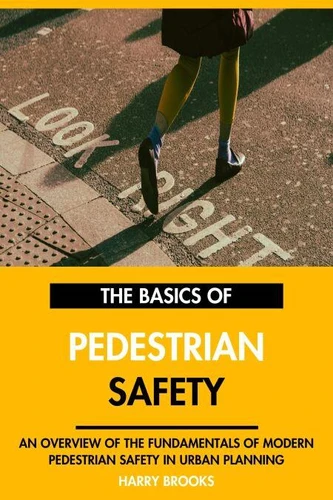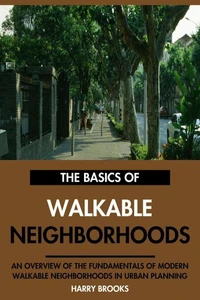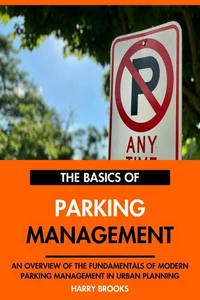The Basics of Modern Pedestrian Safety: An Overview of the Fundamentals of Pedestrian Safety in Urban Planning.
Par :Formats :
Disponible dans votre compte client Decitre ou Furet du Nord dès validation de votre commande. Le format ePub protégé est :
- Compatible avec une lecture sur My Vivlio (smartphone, tablette, ordinateur)
- Compatible avec une lecture sur liseuses Vivlio
- Pour les liseuses autres que Vivlio, vous devez utiliser le logiciel Adobe Digital Edition. Non compatible avec la lecture sur les liseuses Kindle, Remarkable et Sony
- Non compatible avec un achat hors France métropolitaine
 , qui est-ce ?
, qui est-ce ?Notre partenaire de plateforme de lecture numérique où vous retrouverez l'ensemble de vos ebooks gratuitement
Pour en savoir plus sur nos ebooks, consultez notre aide en ligne ici
- FormatePub
- ISBN8231282234
- EAN9798231282234
- Date de parution13/08/2025
- Protection num.Adobe DRM
- Infos supplémentairesepub
- ÉditeurWalzone Press
Résumé
The significance of pedestrian safety in urban environments cannot be overstated. As cities become increasingly congested, the need for safe and accessible walking spaces has emerged as a critical concern for urban planners, policymakers, and communities alike. This eBook aims to explore the multifaceted aspects of pedestrian safety, delving into the fundamental principles that underpin effective urban planning strategies.
By examining the intersection of design, technology, community engagement, and legislation, we can better understand how to create environments that prioritize the safety and well-being of pedestrians. In recent years, there has been a growing recognition of the importance of pedestrian safety as a key component of sustainable urban development. With rising concerns about traffic congestion, air pollution, and public health, cities are increasingly looking to promote walking as a viable mode of transportation.
However, this shift requires a comprehensive approach that addresses the various challenges faced by pedestrians in urban settings. From inadequate infrastructure to the dangers posed by vehicular traffic, the obstacles to safe walking are numerous and complex. This eBook will provide readers with a thorough overview of pedestrian safety in the context of urban planning. Each chapter will delve into specific aspects of the topic, offering insights and practical solutions for enhancing pedestrian safety.
By drawing on real-world examples and best practices from cities around the globe, we aim to equip readers with the knowledge and tools necessary to advocate for safer walking environments in their communities. As we embark on this exploration of pedestrian safety, it is essential to recognize that the responsibility for creating safe urban spaces lies not only with planners and policymakers but also with individuals and communities.
By fostering a culture of awareness, respect, and collaboration, we can work together to ensure that pedestrians are prioritized in the design and management of our urban landscapes. Through this eBook, we hope to inspire readers to take action, whether that means advocating for safer streets in their neighborhoods, participating in community discussions, or simply being more mindful of pedestrian safety in their daily lives.
Together, we can create urban environments that are not only safe for pedestrians but also vibrant, inclusive, and conducive to healthy living.
By examining the intersection of design, technology, community engagement, and legislation, we can better understand how to create environments that prioritize the safety and well-being of pedestrians. In recent years, there has been a growing recognition of the importance of pedestrian safety as a key component of sustainable urban development. With rising concerns about traffic congestion, air pollution, and public health, cities are increasingly looking to promote walking as a viable mode of transportation.
However, this shift requires a comprehensive approach that addresses the various challenges faced by pedestrians in urban settings. From inadequate infrastructure to the dangers posed by vehicular traffic, the obstacles to safe walking are numerous and complex. This eBook will provide readers with a thorough overview of pedestrian safety in the context of urban planning. Each chapter will delve into specific aspects of the topic, offering insights and practical solutions for enhancing pedestrian safety.
By drawing on real-world examples and best practices from cities around the globe, we aim to equip readers with the knowledge and tools necessary to advocate for safer walking environments in their communities. As we embark on this exploration of pedestrian safety, it is essential to recognize that the responsibility for creating safe urban spaces lies not only with planners and policymakers but also with individuals and communities.
By fostering a culture of awareness, respect, and collaboration, we can work together to ensure that pedestrians are prioritized in the design and management of our urban landscapes. Through this eBook, we hope to inspire readers to take action, whether that means advocating for safer streets in their neighborhoods, participating in community discussions, or simply being more mindful of pedestrian safety in their daily lives.
Together, we can create urban environments that are not only safe for pedestrians but also vibrant, inclusive, and conducive to healthy living.
The significance of pedestrian safety in urban environments cannot be overstated. As cities become increasingly congested, the need for safe and accessible walking spaces has emerged as a critical concern for urban planners, policymakers, and communities alike. This eBook aims to explore the multifaceted aspects of pedestrian safety, delving into the fundamental principles that underpin effective urban planning strategies.
By examining the intersection of design, technology, community engagement, and legislation, we can better understand how to create environments that prioritize the safety and well-being of pedestrians. In recent years, there has been a growing recognition of the importance of pedestrian safety as a key component of sustainable urban development. With rising concerns about traffic congestion, air pollution, and public health, cities are increasingly looking to promote walking as a viable mode of transportation.
However, this shift requires a comprehensive approach that addresses the various challenges faced by pedestrians in urban settings. From inadequate infrastructure to the dangers posed by vehicular traffic, the obstacles to safe walking are numerous and complex. This eBook will provide readers with a thorough overview of pedestrian safety in the context of urban planning. Each chapter will delve into specific aspects of the topic, offering insights and practical solutions for enhancing pedestrian safety.
By drawing on real-world examples and best practices from cities around the globe, we aim to equip readers with the knowledge and tools necessary to advocate for safer walking environments in their communities. As we embark on this exploration of pedestrian safety, it is essential to recognize that the responsibility for creating safe urban spaces lies not only with planners and policymakers but also with individuals and communities.
By fostering a culture of awareness, respect, and collaboration, we can work together to ensure that pedestrians are prioritized in the design and management of our urban landscapes. Through this eBook, we hope to inspire readers to take action, whether that means advocating for safer streets in their neighborhoods, participating in community discussions, or simply being more mindful of pedestrian safety in their daily lives.
Together, we can create urban environments that are not only safe for pedestrians but also vibrant, inclusive, and conducive to healthy living.
By examining the intersection of design, technology, community engagement, and legislation, we can better understand how to create environments that prioritize the safety and well-being of pedestrians. In recent years, there has been a growing recognition of the importance of pedestrian safety as a key component of sustainable urban development. With rising concerns about traffic congestion, air pollution, and public health, cities are increasingly looking to promote walking as a viable mode of transportation.
However, this shift requires a comprehensive approach that addresses the various challenges faced by pedestrians in urban settings. From inadequate infrastructure to the dangers posed by vehicular traffic, the obstacles to safe walking are numerous and complex. This eBook will provide readers with a thorough overview of pedestrian safety in the context of urban planning. Each chapter will delve into specific aspects of the topic, offering insights and practical solutions for enhancing pedestrian safety.
By drawing on real-world examples and best practices from cities around the globe, we aim to equip readers with the knowledge and tools necessary to advocate for safer walking environments in their communities. As we embark on this exploration of pedestrian safety, it is essential to recognize that the responsibility for creating safe urban spaces lies not only with planners and policymakers but also with individuals and communities.
By fostering a culture of awareness, respect, and collaboration, we can work together to ensure that pedestrians are prioritized in the design and management of our urban landscapes. Through this eBook, we hope to inspire readers to take action, whether that means advocating for safer streets in their neighborhoods, participating in community discussions, or simply being more mindful of pedestrian safety in their daily lives.
Together, we can create urban environments that are not only safe for pedestrians but also vibrant, inclusive, and conducive to healthy living.






















